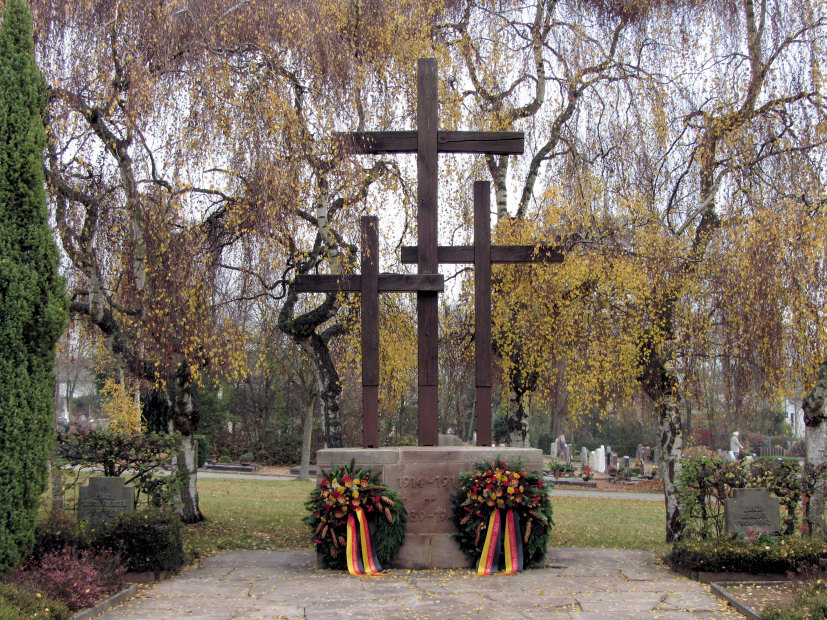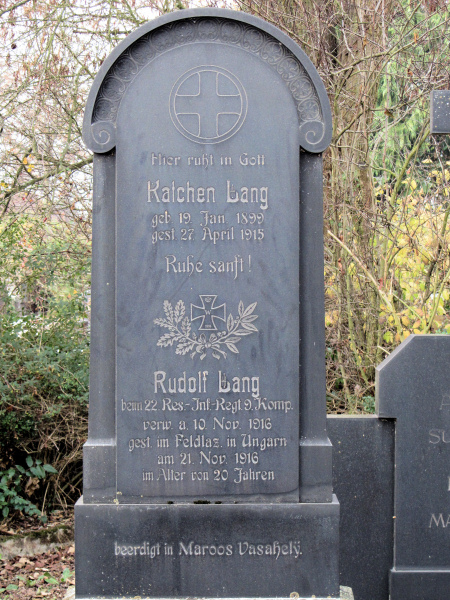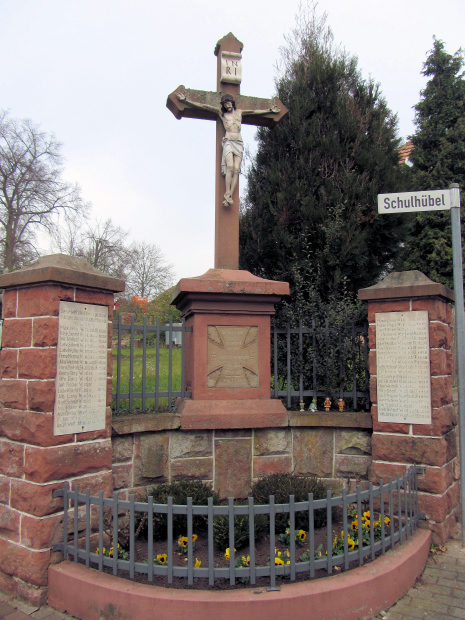
Foreigners find it almost shocking that Germans dance in the streets on Veteran’s Day. It’s the anniversary of the end of World War I. How can that possibly call for a celebration?
First of all, Germans certainly honor their veterans. Every town has a monument to its fallen soldiers; Weilerbach, where I took these photos, has four. Germany’s Memorial Day, called Volkstrauertag, takes place on a Sunday in mid-November. Various bans against public celebrations are in effect on that day.

Yes–but why the party on November 11, the actual Armistice Day?
It’s important to remember that “Germany” doesn’t celebrate Carnival any more than “America” celebrates Mardi Gras. Carnival belongs principally to the Rhenish Catholic tradition and its cities–above all, the great Carnival city of Cologne (Köln).
Cologne enjoyed 500 years as a completely free city–its own state within the Holy Roman Empire. It lost that status in 1798 when the French occupied it. In 1815, the French handed Cologne over to Prussia, and Protestant Prussia’s repressive policies towards the Catholic Church contributed to strong anti-Prussian sentiments in the Rhineland for decades. Meanwhile, Prussia consolidated its territory into the German Empire.
During all this time, the Cologne Carnival (Kölner Karneval) went on: a celebration of the spirit of Cologne itself, no matter who ruled it or how it was spelled. During the First World War, Carnival stopped, and after the war, Cologne was held by the British. But as soon as the British left, Carnival started back up on the same date as always: 11-11, the Fool’s day.
Germans don’t associate 11-11 with war for excellent reasons. When Armistice Day occurred in 1918, the Emperor had just abdicated, so Germany was in a state of confusion. Also, the war didn’t officially conclude until the Treaty of Versailles months later. So, for Germans, the cease-fire date got lost in the shuffle.
Meanwhile, it was the Allies who celebrated Armistice Day–at first, with parades through the streets. But the loss of life had been too high for jubilation. In 1919, the first two minutes of silence took place in Great Britain, and it fit the public mood much better.
Britain’s allies have observed the day with silence ever since.

To read my latest blog posts, please click on the “Green and Pleasant Land” logo at the top of this page. Photos taken in November, 2011, in Weilerbach, Germany. I apologize for the lack of citations: I gleaned this information a tiny piece at a time from German-language and English-language sites all over the web. Text and photos copyright 2011 by Clare B. Dunkle.

Nice article, Clare -thanks! I found out you were in Germany when I ran into Jennifer Ziegler at the Book Festival!
Hi, Caren! Yes, I would have loved to be at the Book Festival this year, but we’ve been over here in Germany since August, so I had to turn them down. Maybe next year. And it’s a perfect place to get my writing done.
I don’t read German, but is the gray headstone that of a 16-year-old soldier? And it looks like his brother is there with him, after serving only 11 days in the war.
Yes, this headstone is for both the brothers, and the top brother was in fact only 16. I’m pretty sure he was a soldier and that the garland with the German military cross at the bottom of his entry was for him. (They couldn’t have foreseen that they would have to make double use of the headstone.) He would have had to lie about his age when he signed up, but this was something many young men did in this as in all other wars. His death might have had to do with the 2nd battle of Ypres, but at the same time, it appears that his body made it home, which I would think wasn’t often the case with wartime casualties. The second brother, however, didn’t make it home. He was 20 years old, the headstone tells us, when he was wounded (verw.) in Hungary, and he died in a field hospital there 11 days later. The headstone notes that he was buried in what is now Târgu Mureș in Romania. I can’t imagine what this would have been like for the family.
Hi,
Just ran across your blog and find it very interesting! I’ve just read a few of your entries about the area I used to live in.
I just wanted to let you know that the military garland was for the 20 yr old brother (Rudolf) as he served in an infantry regiment.
The top cross is for the 16 yr old.
The Freinsheim culinary winefest is what brought me to your blog. We are going on Sunday!
:)